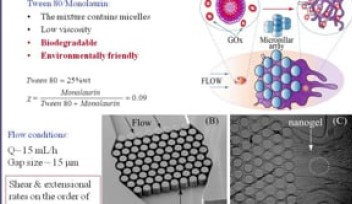The Seneca Valley Virus at Near-Atomic Resolution
An international team of researchers at OIST and University of Otago have used the Nobel-winning cryo-electron microscopy method to reconstruct the structure of Seneca Valley virus, abbreviated SVV, at near-atomic resolution.
The structure shows how the virus binds to its cellular receptor, the Anthrax toxin receptor. Type 1 of this receptor is selectively expressed in up to 60% of human cancer cells and allows the virus to infect and destroy them while not affecting healthy cells. The study, which was published in the journal Proceedings of the National Academy of Sciences USA, reveals how the virus can recognize its target and leave normal tissue alone.
An international team of researchers at OIST and University of Otago have used the Nobel-winning cryo-electron microscopy method to reconstruct the structure of Seneca Valley virus, abbreviated SVV, at near-atomic resolution.
The structure shows how the virus binds to its cellular receptor, the Anthrax toxin receptor. Type 1 of this receptor is selectively expressed in up to 60% of human cancer cells and allows the virus to infect and destroy them while not affecting healthy cells. The study, which was published in the journal Proceedings of the National Academy of Sciences USA, reveals how the virus can recognize its target and leave normal tissue alone.
Copyright OIST (Okinawa Institute of Science and Technology Graduate University, 沖縄科学技術大学院大学). Creative Commons Attribution 4.0 International License (CC BY 4.0).
Tags














